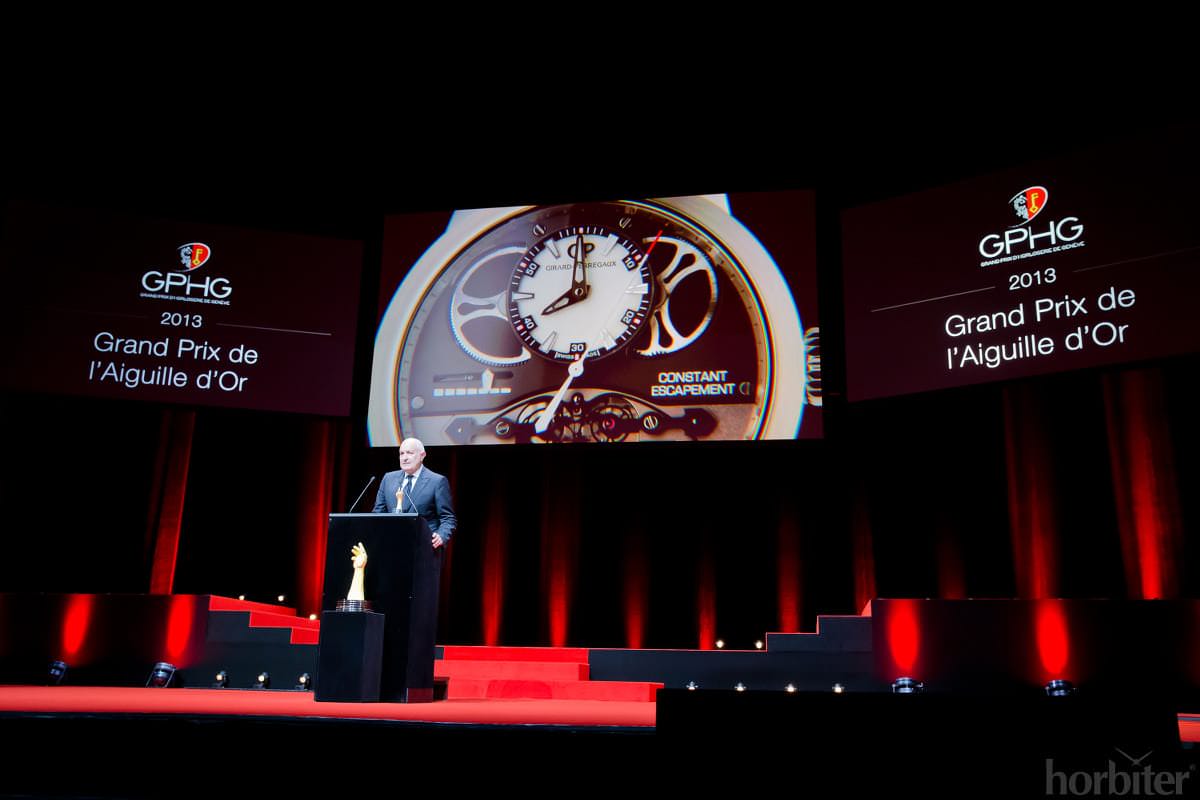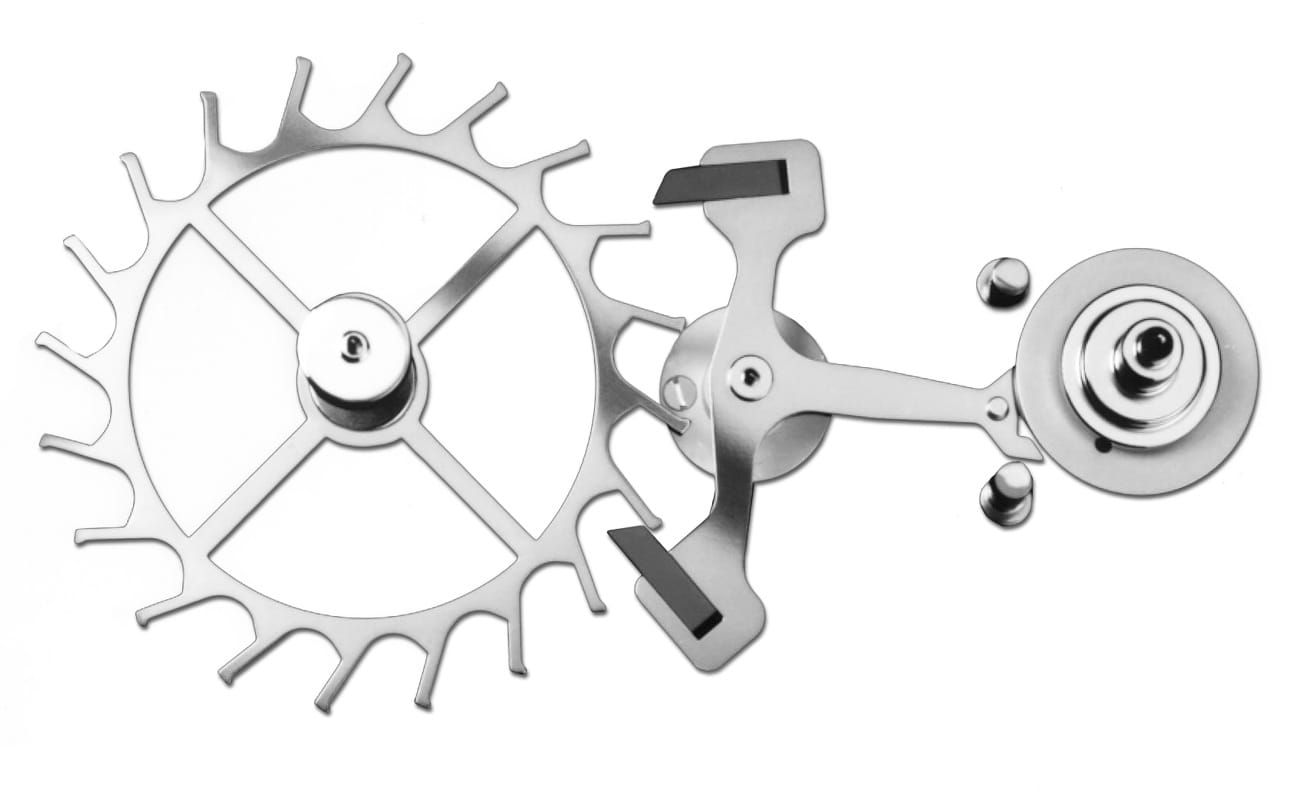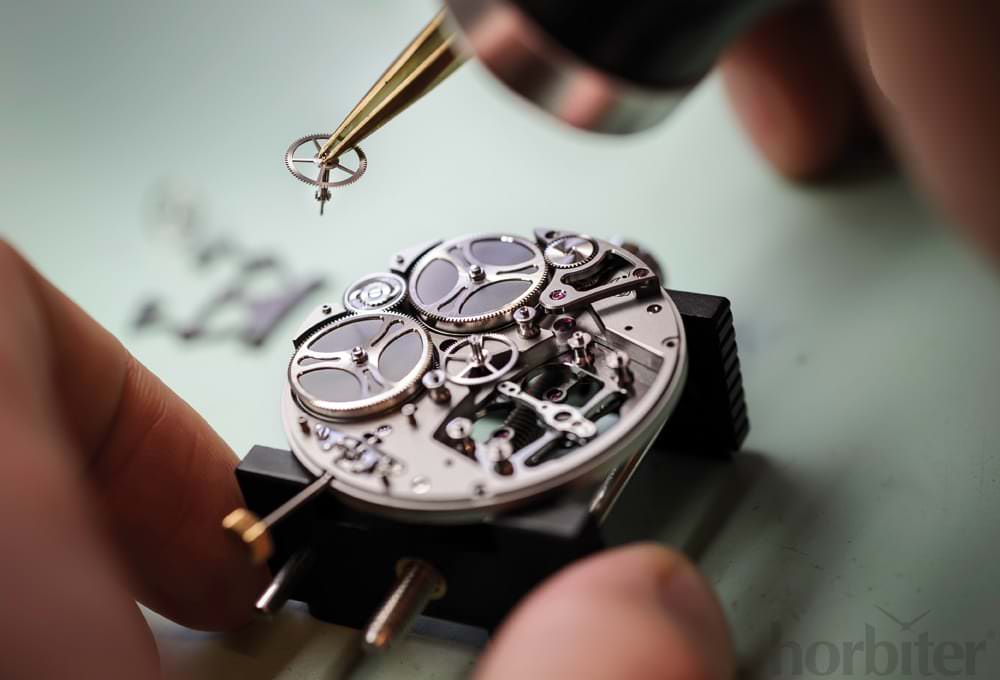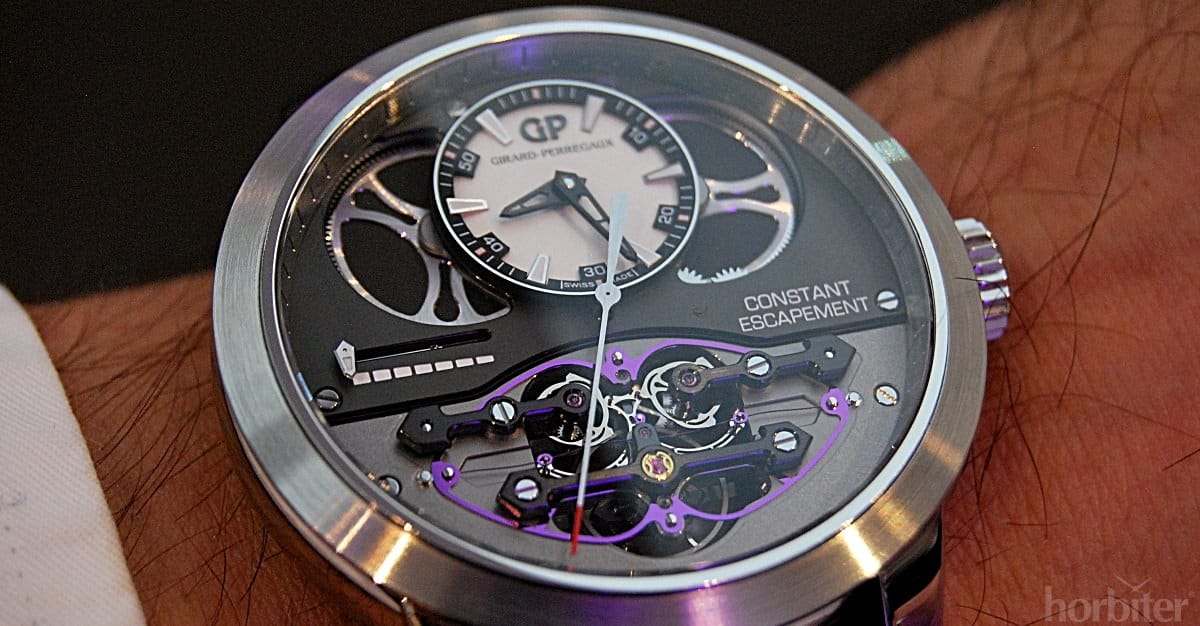November 2013, a month to remember: visit to the Girard-Perregaux manufacture, the flagship manufacture of La Chaux de Fonds, the “Silicon Valley” of haute horlogerie. It was just a question of time: when you get to La Chaux de Fonds, a watch, pardon, a masterpiece of haute horlogerie, conceived by Girard-Perregaux, has just been awarded the much coveted “Aiguille d’Or” at the Grand Prix de l’Horlogerie in Geneva.
 Of course I’m talking about the Girard-Perregaux Constant Escapement L.M. where the initials refer to Luigi Macaluso, visionary and extraordinary personality of the world of haute horlogerie, not to mention president and chief executive officer of the Sowind Group, now part of the Kering Group, and leading figure in the development and promotion of the culture of fine watch making.
Of course I’m talking about the Girard-Perregaux Constant Escapement L.M. where the initials refer to Luigi Macaluso, visionary and extraordinary personality of the world of haute horlogerie, not to mention president and chief executive officer of the Sowind Group, now part of the Kering Group, and leading figure in the development and promotion of the culture of fine watch making.
It was precisely Luigi Macaluso who encouraged the development of the Girard-Perregaux Constant Escapement L.M. introduced in 2008 as a prototype and in limited production in 2013, after five years of fine tuning. The time required to refine the features of what we may consider as the “ultimate watch”, because it solves one of the biggest brain teasers of all master watchmakers, functional regularity of the escapement.
 Because the Girard-Perregaux Constant Escapement L.M. has dealt with the problem at its origin, taking the most difficult route, not using high or very high frequency, but fixing the oscillation frequency and working to ensure that it remains absolutely constant (this however is not a low-beat movement).
Because the Girard-Perregaux Constant Escapement L.M. has dealt with the problem at its origin, taking the most difficult route, not using high or very high frequency, but fixing the oscillation frequency and working to ensure that it remains absolutely constant (this however is not a low-beat movement).
It’s as if, rather than indefinitely increasing the fractioning of an alternative engine (and its capacity) in your car, a guarantee of an increasingly gentle operation, the fractioning is kept unaltered, for example 4 cylinders, but you work on balancing its inertial forces to make it perfectly homogeneous.

That’s what the maison did with the Girard-Perregaux Constant Escapement L.M. In a watch, the escapement, receives energy from the barrel and releases it to the balance wheel. The biggest problem with this solution is that the energy released by the barrel to the escapement isn’t constant as it decreases as the barrel charge is reduced. Thus the idea of creating a device that takes its energy from the barrel, converts the energy into a constant energy to be transmitted to the escapement.
The device created by Girard-Perregaux calls for using a very thin ribbon of silicon, about as thick as one sixth the width of a single hair, that oscillates around a position of instability that is charged, with every vibration cycle, and in a position of maximum instability, by a minute amount of energy issuing from the barrel and transmitting it in a constant manner to the escapement. The energy released, let’s call it “k”, is always the same at each cycle:
Technical result: a movement with a balance wheel that oscillates at 3Hz, but with absolute precision. Now the people of Girard-Perregaux are already at work to further develop this solution, linking it to increasing oscillation frequencies. We’re just at the beginning of a process that will probably lead to using this solution for an ever increasing number of the maison’s collections.
Promotional and historical results: the Girard-Perregaux Constant Escapement L.M. is a milestone in haute horlogerie, opening the way to a new era. The scope of this invention is simply enormous. The risk, in making watches of such great complexity, lies in the possibility of failing to effectively communicate innovation through its design or of incurring into an over-design – a crowded and incomprehensible dial in which the watch lover may become lost.
Conversely, the Girard-Perregaux Constant Escapement L.M. is aesthetically simple and unadorned. Its case of white gold measures just 48mm in diameter, with emphasis on the regulator shaped like butterfly wings, upon which are three bridges, the unmistakable symbol of the Girard-Perregaux tourbillons, the hour and minute hand at 12 0’clock in a small “suspended” dial on a double barrel and a linear power reserve at 9 0’clock. And if this should still does not satisfy you, just rotate the case 180 degrees rearward, and you will fall in love.
(Photo credit: Horbiter®)
Gaetano C. @Horbiter®

